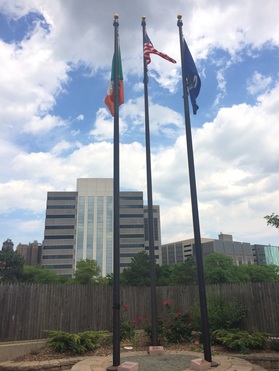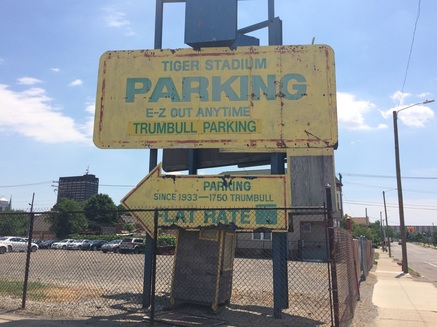
This summer, I’m working at the Corktown Economic Development Corporation, which is a client of Human Scale Studio, a “strategic consultancy that helps business, philanthropy, and civic institutions shape the future of the urban world.” It would be accurate to say that our goal this summer is to help improve Corktown, but that is an overly simplistic description. What we are specifically trying to do is develop a PlacePlan of Corktown by analyzing its current assets and areas for growth, in order to help community stakeholders and the city government of Detroit a) transition Michigan Avenue into a complete street and b) activate Roosevelt Park.
Though there won’t be a single point of time in which Michigan Ave. is “complete” and Roosevelt Pak is “activated,” these goals basically mean that…
a) Michigan Ave. is made narrower through sidewalk extensions, improved/expanded bike lanes, and other means. People of all abilities and ages are comfortable being on the street, shopping, dining, and interacting, and the impact of vehicles in this area is reduced.
b) Roosevelt Park is utilized as a space for recreational activity, public programming, and other community interaction. Ideally, Michigan Central Station is repurposed, possibly even as a transit center.
The specific implementation of these plans for creating a complete street and activating the park aren’t something that planners should just sit down and draw up. If this were the case, we would not be here; the city could decide what to do, and when the funds were in place it could take action. Developing this historic and valuable neighborhood demands a plan based on the the interests of its constituency, considering historical legacy while also looking to sustainable design principles that will provide for healthy use and growth in the coming decades and beyond. Creating this PlacePlan is a large project, and we’re by no means taking it on alone. It involves creating maps of the region to examine current property use, surveying in person, gathering community input, researching legacies of the region, and making informed recommendations determined from a consensus of opinions.
For us to enter Detroit, and specifically the Corktown neighborhood, as outsiders and try to take action and change the landscape of the neighborhood based on our own ideas of good and bad design would be wrong. Some residents have lived in Corktown for decades and decades, and their voices deserve to be heard. The people of the neighborhood we are working for come first. Our goal is to help them feel heard and to enable those who will be making important decisions about the future of their community to hear them too.
ps. I would be remiss if I didn’t add a note about my thoughts on the efficacy of our work. I get the feeling that with many (if not most) Duke Engage programs it takes so long to get acclimated and come to understand your role within the host community that it’s tough to make real change in just eight weeks. (As a side note, I feel like everyone in Detroit is in the process of producing real, tangible results that will be used at the end of the summer by their community partners.) But even if this weren’t the case, there will be plenty of opportunities to take knowledge from Duke Engage and apply it at home. For example, I’ve already learned a lot about urban planning and placemaking in my first few weeks in Detroit, and I could see myself continuing to pursue this by working in Durham on better street design and other urban design principles that put people first. Having an impactful summer is important, but it’s just as important to soak up as much as possible in order to be able to do your best work in the future.

 RSS Feed
RSS Feed
